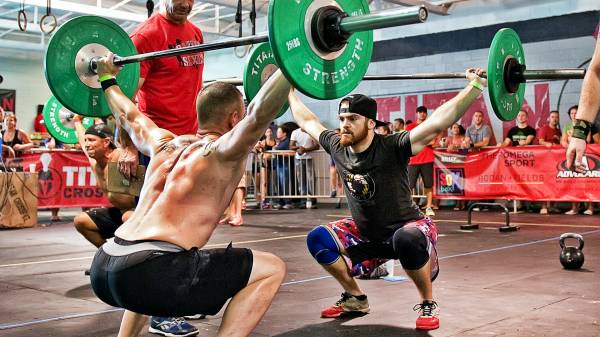We all know lots of stuff. For example, most of us know we really should listen to our mothers and eat our veggies (solid advice, mom). We know that we should brush our teeth. We should exercise regularly and get enough sleep. All great things.
But I bet there is at least one thing that you know and do not do, despite the best of intentions and desires. Someone may even call you out on it, and you find yourself responding, “I know, I know.” Tell me, if you really know, why aren’t you doing it?
Here’s the thing, there is a huge gap between knowing and doing. We know that massive action gets stuff done, but most of us don’t even make it to the action part. Why is that? Where is the disconnect? Let’s take a look some of the factors that are at play.
It Starts With Fear and Distractions
You know what’s totally okay? Being scared. You know what’s not? Being so busy or distracted that you aren’t even aware of the underlying fears that are holding you back. I’m talking about both conscious fears and the deeper, hidden fears and beliefs that may not float up to your conscious thought very frequently, if at all. It’s these beliefs that often shape our actions, or lack thereof, and if we don’t pause long enough to become aware of them and deal with them, we get stuck.
For example, if you do any type of creative work, I’m sure you know the fear that sets in right before you begin working. It may not come across as a conscious thought so much as a strong gut reaction; that what you do today won’t be good enough, that it will fail spectacularly. You may be afraid of the task because you don’t know where to start. I know I feel that way almost every time I sit down to write.
It’s super easy to find all these other little things to do to fill that time (Facebook, laundry, dishes – just to name a few). It is almost a self-fulfilling prophecy: Feel the fear. Numb it with something else. Fail anyways.
Sometimes just the fear of getting started is enough to prevent you from doing anything. [Photo credit: J Perez Imagery]
Don’t do that. Don’t be that guy (or gal). Build some time into your life to do a gut check. Breathe deep and dig in on what fears you have that are causing you to falter or procrastinate. Write them down. Fears get less scary when you look them in the face. And when you know what scares you, you can take steps to avoid sabotaging yourself!
The idea of sabotaging yourself always brings me back to something I learned from skiing: If you want to miss the tree, don’t look at it. If you glue your eyes to the tree you will probably smack right into it. The same thing applies to the barriers the keep us from acting. We put our minds on the wrong things (our fears) and before we know it… Wham! It’s far better to know the fears are there and look at how we can act positively despite them. No smacking into trees for you!
Behavioral Goals vs. Outcome Goals
We know that goal-setting is key to success. It is well-researched and evident in the lives of highly successful people. Allow me to add a wrinkle to the typical talk surrounding goal-setting. We tend to focus on S.M.A.R.T. goals that are very outcome-based: lose 10lb, deadlift 400lb, run a marathon. All good stuff, but I’d argue that it’s still missing something.
Outcome-oriented goals are an end, not a means. Think of them as the road map for your end result. You have your ultimate goal and milestones along the way to measure your success. Outcomes, however, are not action; they are the result of it. It’s subtle, but there is a disconnect here. Outcome goals don’t necessarily account for actions need to reach a goal or the messiness that is life.
You see, outcome goals describe how we want things to be at the end of the process. There’s nothing wrong with that. It’s perfectly fine to think about the things you want and start with the end in mind.
But you can’t stop there.
Wanting things isn’t enough. Even if you really, really, really want them. Here’s why: We often can’t control outcomes, at least not completely. Outcomes don’t operate in a vacuum. They are subject to outside forces like your job getting crazy busy or your gym closing for renovations.
In other words, you cannot control all the variables at play, but you can control what you do. That’s why it’s important to pair your outcome goals with goals that are based on behaviors. While life may get messy around you and things outside of your control can create chaos, you still have control of your every day actions. That’s empowering. It put’s you in the driver’s seat.
Let’s say you have a goal to add ten pounds of muscle over the next three months. That’s the outcome. The behaviors that drive that result can be simplified down to two primary areas: consistently lifting heavy loads and eating more calories, especially protein. Say you already eat pretty well. You can nail that down even further by adding an additional 20-30g serving of protein with each meal, and weight training 5 days per week. These are both behaviors that you can control and they’re both very measurable. It connects the dots between where you want to go and what you need to do to get there.
Willpower Is a Myth
Tangent to behavior is another common misconception that many of us have: if we can just muster up the willpower we can do anything. It’s as if we think willpower acts on demand. Hate to break it to you, it doesn’t.
Think of willpower as a gas tank: you start the day on full and burn through it as you go. Maybe you take a lunch break or a small nap midday. That’s like stopping at a gas station and refueling a little bit (but definitely not all the way) before going out for more. Either way, you are at your fullest when you start your day and gradually approach empty.
The reality is, you only have so much energy to use each day. The more of it you spend on making decisions, dealing with interruptions and distractions, or doing hard physical labor, the less you will have for other things.
Let’s dig in on this idea of decision fatigue more specifically. You spend energy on hundreds of tiny decisions each day can be poisonous. The antidote? Habits. Taking behaviors and transforming them into habits converts them from a conscious act of will to a subconscious routine that becomes part of your every day life. This spares your energy for other areas of your life. To those on the outside looking in, it looks a whole lot like willpower or great discipline.
Get in The Habit Loop
Knowing a little bit about how habits work (both the good and bad) goes a long way toward putting yourself in charge and shaping your behaviors. Habits tend to happen in a three-part loop:
- A cue: This is a trigger for your behavior to start, like your alarm going off or walking into the bathroom.
- A routine: This is the actual behavior or habit, like brushing your teeth.
- A reward: The benefit for taking that course of action (drinking a cup of your favorite coffee for breakfast).
All three pieces are key, but the reward portion is how your brain actually learns to want to continue doing a particular behavior in the future. Unfortunately, this works both ways. For example, the habit of smoking is often linked with the reward of feeling more relaxed or as a way to cope with stress.
Take a moment today to think on your own habits, bad and good. What cues do you have in place? What about rewards? How would you go about shaping a new habit or routine? Take control. When you can shape your cues and choose your rewards, the routine has a much better chance of sticking.

The sword of habit cuts both ways, so consciously create yours. [Photo credit: J Perez Imagery]
What to Do When You Get Stuck
Sometimes we know all of these things and still get stuck. The desire for change is definitely not black and white in the least; it’s a spectrum. If you don’t want to change, or just sort of want to change, your chances of failure are much higher. We are creatures of comfort and routine. When we are lukewarm with regard to making a change it is usually because we can see benefits on both sides of the spectrum. When faced with options like this, our brains will almost always default to what feels normal or comfortable (our old habits).
For example, lets say you have a habit of watching television before bed. It feels good, right? It’s kind of relaxing and you can turn your mind off after a long, hard day. But you also stay up too late, and don’t sleep as soundly. It’s causing you to struggle with waking up and you rely on coffee to power through your work day. Changing your nighttime routine to get better sleep would do a world of wonders for you at work. Can you see the dilemma here? Both sides have benefits, but your old steady TV habit already feels comfortable, so it continues. It is so easy to default back to what you know and get stuck.
How exactly do you combat this? The first step is to develop an awareness of your readiness to change and the ambiguity you face. Take a moment to stop and evaluate both sides of the issue. Note the forces at play. Write them down. Once you are clear on the situation at hand, it becomes easier to move yourself into action.
Don’t Over-Fantasize
A common theme is developing here. Cultivating mindfulness and envisioning what the future could look like are helpful in getting change to stick, but it can be taken too far. A study done by Gabriele Oettingen and Doris Mayer concluded that positive thinking about the future is broadly beneficial, yet too much fantasy can have disastrous results on achieving goals.
Why is fantasy so dangerous? For one, it’s easy and it feels good. A lot of folks get stuck because it feels nice to dream about wonderful things in the future: of beaches and yachts and quitting their job and starting a business. But by enjoying it vicariously, it can distract you from the here and now. It pulls your mind away from the actual steps and stumbling blocks you are sure to face along the way. In essence, it sets you up for disappointment unless you pair it with realistic expectations.
So go ahead and dream of the future, but do it with your feet on the ground. See where you want to go, but ask yourself what the journey will look like to get there. What kind of roadblocks will you encounter? How will you stumble? When you stumble, how will you get back up? These questions are important in keeping you from getting stuck in fantasyland and inaction.
Know and Do: Your Turn
This is only the tip of the iceberg on the gap between knowing and doing. My hope is that this inspires some good thinking for you or opens the door for some excellent conversation. Tell me, what do you think? What barriers do you see that hold you back from acting? Leave some thoughts in the comments below.

The first step to success occurs in the mind:
See It, Do It, Win It: Charge Up Your Visualisations






